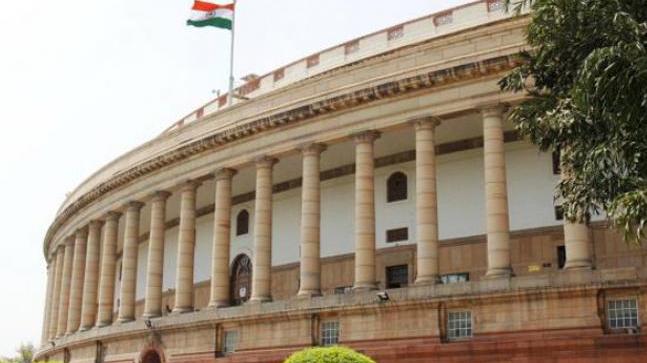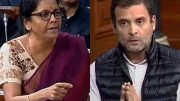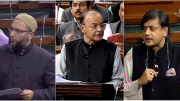Yesterday the 16th Lok Sabha concluded its final session before going for re-election this year. PM Modi delivered the final speech of the government in this Budget Session, loaded heavily with gratitude to all constituents and functionaries of the lower house of the Parliament, along with highlights of some key successes and milestones achieved by this house. Here I highlight some of the key aspects of the 16th Lok Sabha
-
More women in parliament
One of the most remarkable aspects of the membership of this house was that it comprised the highest ever number of women MPs – 69, along with 44 first time women MPs. It also saw the highest number women union ministers, and for the first time, women ministers in two key security related ministerial births – defence and external affairs. It was also the first occasion where there was a woman speaker and a woman secretary general chairing the sessions.
-
Second lowest hours in session
The house worked for a total number of 1,615 hours which was 20% more than the 15th Lok Sabha, but 40% lower than the average of all full term Lok Sabhas. This is largely due to two reasons – 1) Drop in the number of sitting days to 331 days (30% fewer than average) and 2) 16% of the time being lost due to disruptions. But the sessions that happened, ran with remarkable efficiency – eight of the 17 sessions ran with 100% outcome, with an overall average 85%.
-
One of the highest number of bills passed
But the output is not the real measure of the effectiveness of this house. This Lok Sabha did away with over 1400 archaic laws that are irrelevant or are abused in today’s context. In this final speech, PM Modi stated that out of 219 Bills introduced in the house, 203 were passed during the tenure of this house. By comparison the 15th Lok Sabha passed 179 bills and allowed 68 bills to lapse with its tenure. This Lok Sabha managed to pass (& amend) some of the most critical and controversial bills, possible largely due to the strong majority that NDA enjoyed and proved impossible in highly mixed coalition governments of the previous two Lok Sabhas. I have listed some of them below:
| Insolvency And Bankruptcy Code Bill, 2018 | Essentially allows for resolution in cases of bankruptcy, protecting creditors and jobs. |
| Companies Bill, 2018 | Aimed to improve ease of doing business, declog case-logs of National Company Law Tribunal and prescribe strong action against non-compliant companies. |
| GST Bill, 2016 | The 101st amendment to our constitution was made to consolidated taxes levied on manufacture, sale and consumption of goods and services, streamlining transactions at a mammoth scale. |
| Aadhaar Bill, 2016 | Provided legal backing to Aadhaar UID number for direct transfer of subsidies/other benefits into beneficiaries’ bank accounts; eliminating room for pilferage. |
| Maternity Benefit Bill, 2016 | Increasing maternity leave of working women from 12 to 26 weeks for the first two children, and allowing biological mother donating their eggs, 12 weeks of maternity leave. In addition, it mandates every establishment with more than 50 employees to provide for crèche facilities for working mothers, & for them to visit it during working hours, or allow them to work from home if needed. |
| Enemy Property Bill, 2016 | The 49 year old law was amended to allow appropriation of property in India owned by Pakistani nationals, attaching over 9500 enemy properties for divestment, worth over Rs. 1 Lakh Crore. |
| Fugitive Economic Offenders Bill, 2018 | Increases prosecution of major economic offenders that evade prosecution by remaining outside the jurisdiction of Indian courts, by allowing confiscation of their properties and assets. It is the law under which assets of Vijay Mallya and many others have been seized. |
| Benami Property Bill, 2016 | Introduced to curb black money transactions to ensure all real estate transactions are conducted in the name of the actual owner. |
| Economic Quota Bill 2018 | Provides reservation in public employment and higher education for economically weaker sections, regardless of caste. |
-
No Confidence Motion
The No Confidence Motion has only been moved 27 times in the past. The last time when BJP formed a government, it did not survive the vote of no confidence. In 2014, 282 members of the BJP were elected to the 16th Lok Sabha, well above the 273 mark required to form a government and a comfortable 336 members with alliances. But by the monsoon session of 2018, coming out of losses in by elections and deaths of their MPs, BJP dropped under the halfway mark and the remainder of the members decided to test the strength of the remaining NDA’s ability to command a 50% strength. Unofficially, it was a way for Congress and other major parties to see who will stand by them after 2019 general elections. In the end, it turned out to be a formality with the NDA being able to garner votes of 325 members supporting their government.
-
Jack of all trades – Jaitley
Till 2014, the Union Council of Ministers was a mix of representation of too many parties, a result of a government built by heterogeneous coalition. Since 2014, BJP’s unanimous strength seems to have become a liability – with too small a bench strength to appoint as ministers. BJP’s position of power meant that they do not have to share cabinet positions with anyone, even if they probably wanted to or should have. Resultantly, they relied heavily on one man to occupy any major cabinet berth for which they could not find suitable occupant – Arun Jaitley. To the best of my knowledge, it has to be some sort of a record for one parliamentarian to simultaneously hold 4 major cabinet positions – Defence, Information & Broadcasting, Finance, and Corporate Affairs as a separate stint. A foreign commentator once noted that one of the signs that this government is hardworking is that Jaitley has stretched himself so far as to become seemingly unwell. If it weren’t for Jaitley’s diplomatic relations across the spectrum, this would have become a bigger story than it did.
Part two of this post will highlight some legislatively lighter yet preceptionally crucial moments that occurred in the Lok Sabha – such as the famous Hug, Mulayam Singh Yadav’s endorsement of PM Modi, and some missed opportunities.
What other moments do you think were noteworthy in the parliament in the last five years? I would love to hear it on twitter at @HemantGaule or in the comments below.
Previously on State Craft:





Be the first to comment on "The 16th Lok Sabha (2014 – 2019)"